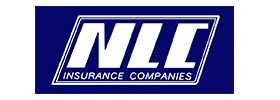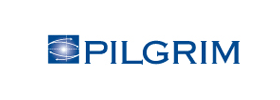
Have you ever filed a claim and been surprised your insurance company didn’t pay the full amount right away?
Are you confused by terms like “depreciation” or “holdback” listed on your claim settlement?
You’re not alone—this is one of the most common pain points in the claims process.
In this article, we’ll explain what a holdback is, why insurers use it, and how it applies to both structural repairs and contents (personal property) claims. You’ll also learn what steps you need to take to recover the full amount you’re owed.
Section 1: What Is a Holdback in an Insurance Claim?
When you file a property damage claim, your insurance company may withhold part of your payout. This withheld amount is called a holdback, and it’s tied to depreciation—the estimated loss in value due to age, wear and tear, or obsolescence.
💡 Example:
A damaged 10-year-old roof might cost $12,000 to replace. The insurance company subtracts $4,000 for depreciation and pays you $8,000 initially.
The $4,000 holdback is paid later, once you show proof the roof was actually replaced.
Section 2: Why Do Carriers Hold Back Part of the Payment?
Insurance companies don’t want to overpay for losses that aren’t repaired or replaced.
Here’s why holdbacks are used:
- ✅ To avoid fraud or misuse of funds
- ✅ To encourage proper repairs or replacement
- ✅ To protect against overvaluation of older items
- ✅ To ensure compliance with Replacement Cost Value (RCV) policies
A holdback is essentially the insurer saying, “Once you prove the work or replacement is done, we’ll release the rest.”
Section 3: How a Holdback Works for Personal Property (Contents) Claims
This surprises many policyholders: holdbacks also apply to personal property, not just your home or roof.
Let’s say a fire destroys furniture, electronics, and clothing. Here’s how it typically works under an RCV policy:
🪑 Example – Replacing a computer
- Original value: $2,000
- Depreciation: $800
- Initial payout (ACV): $1,200
- You buy a new computer and send the receipt
- Insurer releases $800 holdback = ✅ Full $2,000 reimbursed
📷 Important:
If you don’t replace the item (or buy a less expensive version), you may not get the full depreciation back.
✔️ To recover the holdback for contents, you usually need:
- Receipts or invoices for replaced items
- Photos (if required)
- Itemized inventory of damaged/lost property
- Proof that replacement occurred within the insurer’s required timeframe
Section 4: ACV vs. RCV—Which One Do You Have?
Holdbacks only apply if you have a Replacement Cost Value (RCV) policy. If your policy is Actual Cash Value (ACV) only, depreciation is deducted—and you won’t recover that amount later.
🔍 Know your policy type:
- RCV = You can recover depreciation with proof of replacement
- ACV = You get a depreciated payout only
Section 5: How to Recover Your Holdback (Step-by-Step)
To get the full payout, including the holdback:
- ✅ Complete the repairs or replacement
- ✅ Save receipts, invoices, or estimates
- ✅ Submit documentation to your insurance company
- ✅ Follow up with your adjuster if needed
Tip: Ask your adjuster early: “What proof will you need from me to release the holdback?”
Protect Yourself by Understanding the Process
At the end of the day, a holdback isn’t a trick—it’s a standard part of how many insurance policies work. Whether you’re repairing a roof or replacing lost personal property, understanding depreciation and proof-of-replacement rules helps you get every dollar you’re entitled to.
Now that you know how holdbacks work for both structural and contents claims, don’t leave money on the table.
Here’s the rewritten section with your requested focus:
📞 Need help understanding the claim paperwork or how your policy works?
If you’re a client of Vargas & Vargas Insurance, give us a call at 617-298-0655—we’re here to walk you through the process step by step.
If you’re working with a claims adjuster or a local independent insurance broker, don’t hesitate to reach out to them with your questions.
Getting expert guidance now can ensure you recover everything you’re entitled to.












